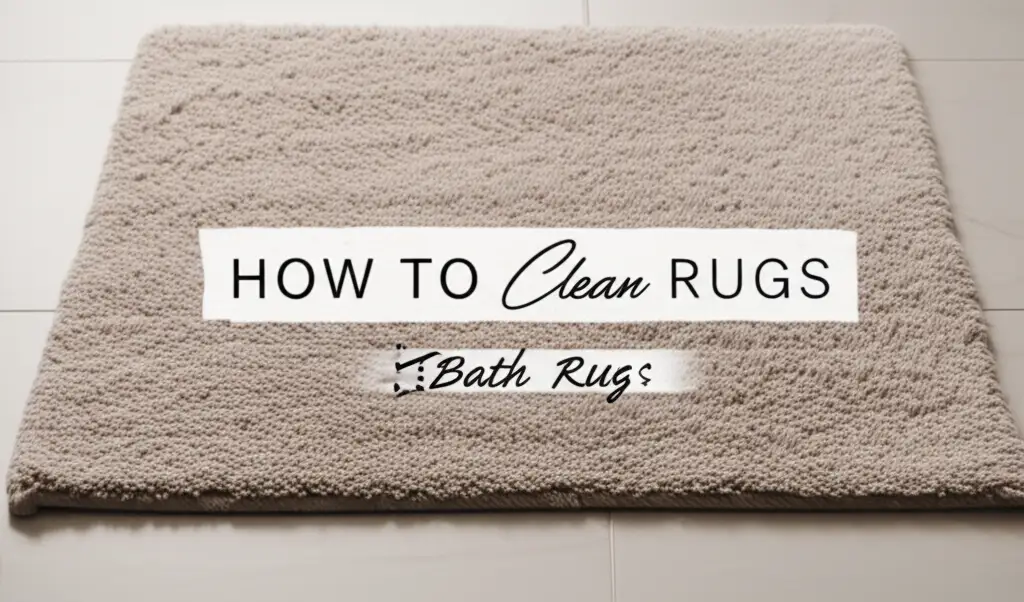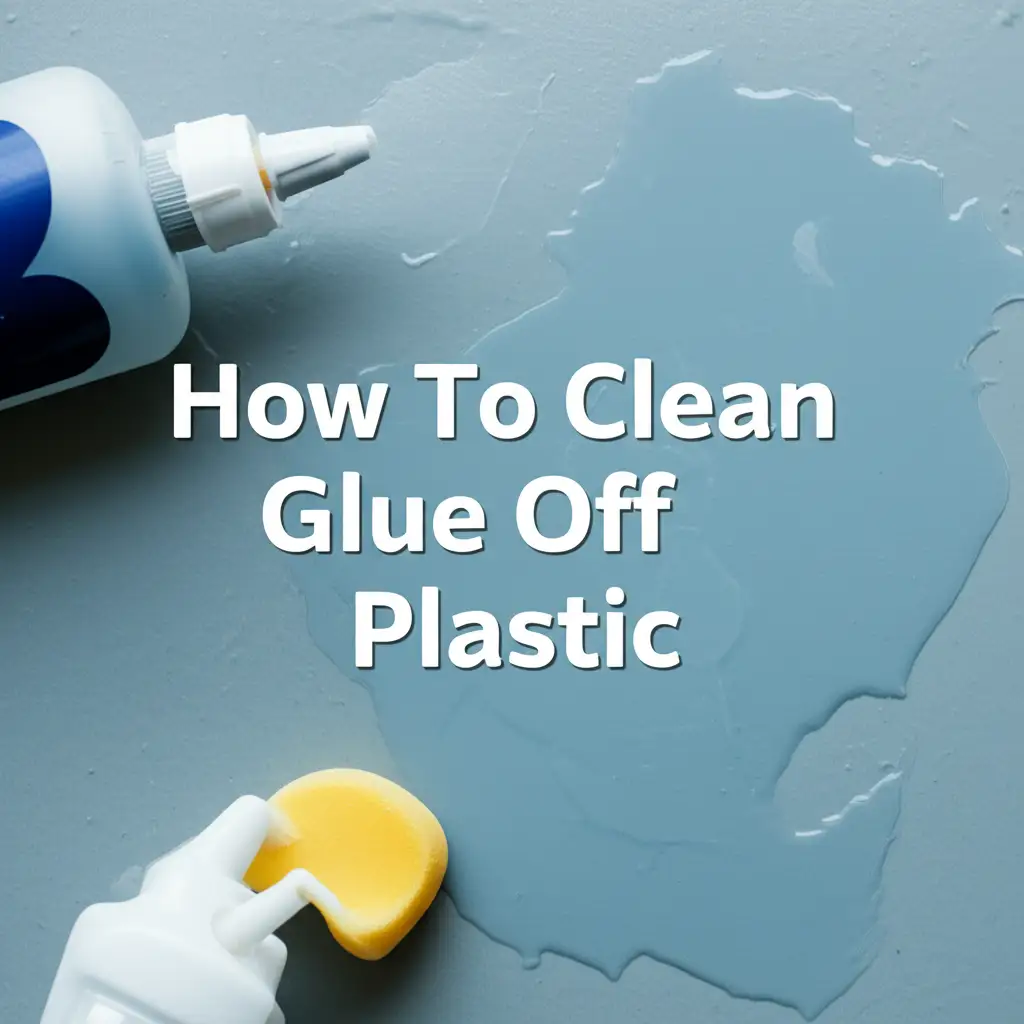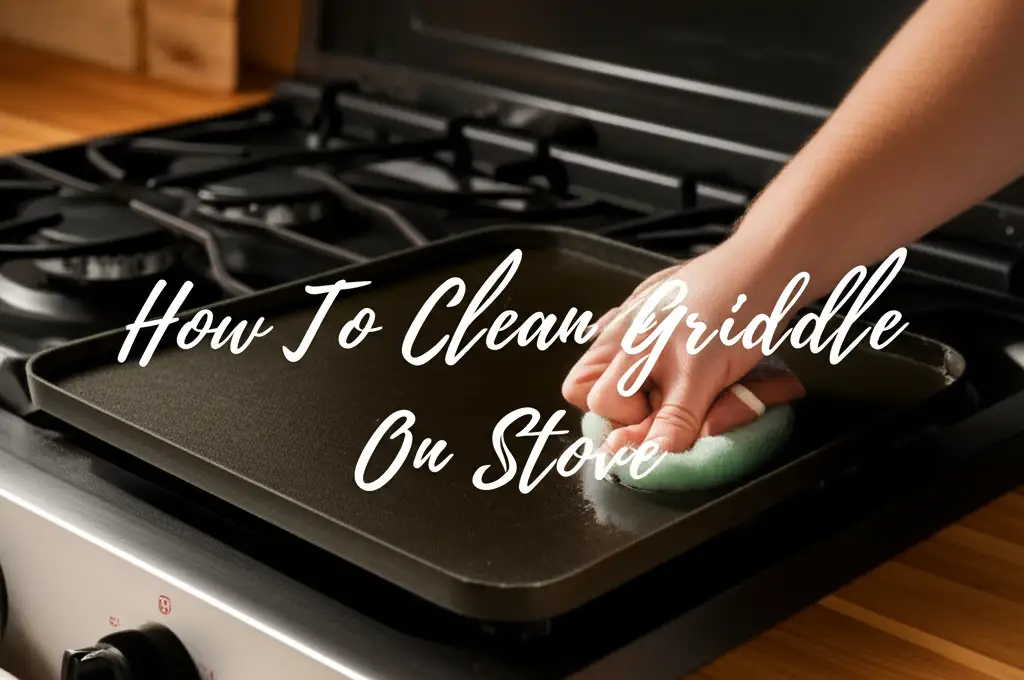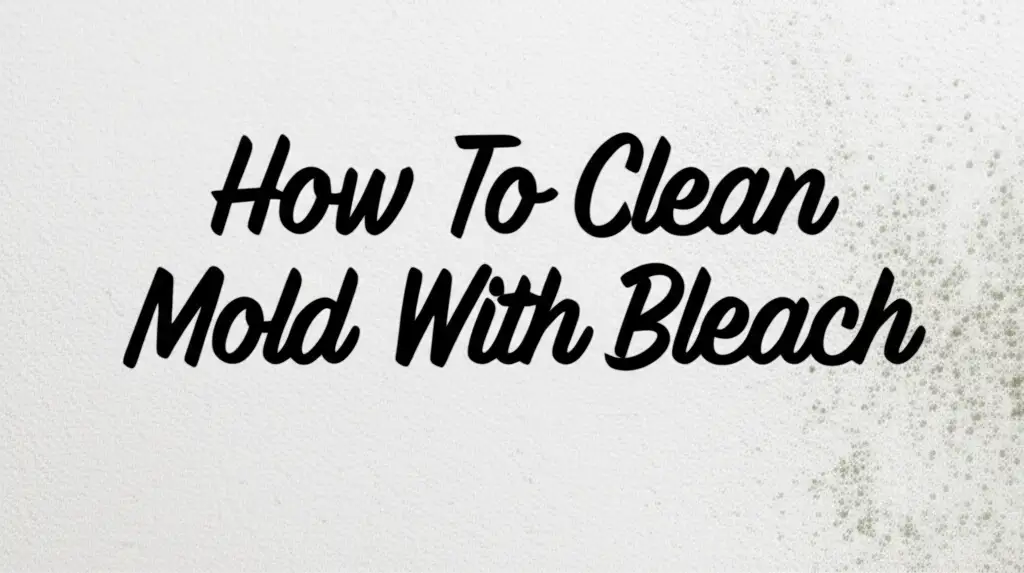· Home Cleaning · 14 min read
How To Clean Smoke Damage

Clean Smoke Damage: Your Guide to a Fresh Home
Smoke damage can feel overwhelming. A small kitchen fire or a larger incident leaves behind ugly stains and a terrible smell. I understand the frustration you feel when faced with a smoke-filled room. Restoring your home to its pre-damage state requires specific steps. This guide will help you understand how to clean smoke damage effectively. We cover everything from assessing the damage to removing stubborn odors and stains. You will learn about the right tools and techniques for different surfaces.
Takeaway
- Assess the smoke damage carefully before starting.
- Wear proper safety gear like gloves and a respirator.
- Clean all surfaces from top to bottom, starting with dry methods.
- Use specific cleaners designed for smoke and soot.
- Address lingering odors with air purifiers and sealing primers.
- Know when to call professional restoration services.
Smoke damage cleaning involves removing soot, neutralizing odors, and restoring affected surfaces. This requires specialized cleaners, proper ventilation, and often multiple cleaning steps for complete restoration.
Understanding Smoke Damage Types
Not all smoke damage is the same. Different types of fires create different kinds of smoke and soot. Knowing the type helps you choose the correct cleaning method. For instance, a quick-burning fire might leave dry, powdery soot. A slow, smoldering fire often creates wet, greasy smoke residue.
Dry smoke comes from high-temperature fires. It often leaves a powdery, non-smearing residue. This type of soot is easier to clean with dry methods. Wet smoke results from low-temperature, smoldering fires. This residue is sticky and smears easily, making it harder to remove. Protein smoke comes from burning food. It leaves a greasy film and a strong, unpleasant odor. Fuel oil smoke originates from furnace puff-backs. This soot is dark and oily, often leaving a strong, pervasive odor. Taking swift action is important regardless of the smoke type.
Characteristics of Smoke Residues:
- Dry Smoke: Light, powdery, grey or black. Does not smear easily.
- Wet Smoke: Sticky, greasy, dark brown or black. Smears readily.
- Protein Smoke: Yellowish to brownish, thin, varnish-like film. Strong, lingering odor.
- Fuel Oil Smoke: Heavy, black, oily. Difficult to clean and strong odor.
Identifying the smoke type guides your cleaning strategy. For example, you would use different cleaners for greasy protein smoke than for dry wood smoke. This understanding sets the foundation for successful cleanup. Knowing the type helps you avoid making the damage worse.
Essential Safety and Preparation for Smoke Cleanup
Before you start cleaning smoke damage, safety must come first. Smoke residue contains harmful particles. You need to protect your health. Always wear personal protective equipment (PPE). This includes a respirator mask, safety goggles, and rubber gloves. A disposable suit can protect your clothing.
Proper ventilation is also key. Open windows and doors. Use fans to create airflow. This helps clear the air and reduces your exposure to airborne particles. You should also cover areas not affected by smoke. Use plastic sheeting and tape to seal off rooms. This prevents soot from spreading. Gather all your cleaning supplies before you begin. This saves time and effort during the cleanup process. Have plenty of sponges, cloths, buckets, and cleaning solutions ready.
Safety Measures:
- Wear a Respirator Mask: Choose an N-95 mask or better. This protects your lungs from soot and chemicals.
- Use Eye Protection: Safety goggles keep smoke particles out of your eyes.
- Protect Your Hands: Wear heavy-duty rubber gloves. This prevents skin contact with soot and cleaning agents.
- Ventilate the Area: Open all windows and use fans. Ensure air moves out of the affected space.
- Protect Unaffected Areas: Use plastic sheets and painter’s tape. This stops soot from spreading to clean rooms.
Preparing your space and yourself prevents further harm. It also makes the cleaning process more efficient. Do not rush this preparation stage. It is important for a safe and effective cleanup.
Cleaning Smoke Damaged Walls and Ceilings
Walls and ceilings often bear the brunt of smoke damage. Soot clings to these surfaces, leaving dark streaks and a smoky smell. Cleaning them requires a careful, two-step process: dry cleaning followed by wet cleaning. Always start from the top and work your way down. Gravity will help you.
Begin with dry cleaning methods. Use a HEPA vacuum cleaner with a brush attachment. Gently vacuum the walls and ceilings. This removes loose soot without smearing it. Next, use a dry chemical sponge, often called a “soot sponge.” These sponges lift soot without water. Wipe in one direction to avoid streaks. Do not scrub hard; let the sponge do the work. Once the sponge is saturated, cut off the dirty part or use a fresh one. For more specific guidance on yellowing walls, you can read our article on how to clean yellow walls from smoke.
After dry cleaning, move to wet cleaning. Mix a specialized smoke damage cleaner with water according to package directions. Trisodium Phosphate (TSP) substitute is effective for tough soot. Always test cleaners in an inconspicuous area first. Use clean cloths or sponges. Dip the cloth, wring it out well, and wipe the surface. Change your cleaning solution and cloths often. Rinse surfaces with clean water to remove residue. For specific techniques on cleaning smoke from different wall types, check out our guide on how to clean smoke off walls. If the damage is from candle smoke, our article on how to clean candle smoke off walls offers targeted advice.
Techniques for Different Wall Surfaces:
- Painted Walls: Use a mild cleaner and soft cloth. Test in a hidden spot first. Avoid harsh scrubbing.
- Wallpaper: Delicate. Test cleaners carefully. Sometimes dry cleaning is the only option. Wet cleaning can damage wallpaper.
- Textured Walls: More challenging. Use brushes to get into crevices. Dry chemical sponges are effective here.
- Ceilings: Often collect the most soot. Follow the same dry-to-wet process. Use a sturdy ladder or extension pole. For general ceiling cleaning tips, see our guide on how to clean a ceiling.
After cleaning, allow walls and ceilings to dry completely. You may need to apply a stain-blocking primer before repainting. This seals in any remaining odors and prevents bleed-through. Cleaning cigarette smoke from a house follows similar principles for walls and surfaces; our guide on how to clean cigarette smoke from house provides more details.
Tackling Smoke Odor in Fabrics and Furniture
Smoke odor permeates soft surfaces. Fabrics, upholstery, and carpets absorb smoke particles deeply. Removing this smell needs more than just surface cleaning. You must address the embedded odors. Start by airing out all affected items outdoors. Sunshine and fresh air can help immensely.
For washable items like curtains, clothing, and blankets, use your washing machine. Add a cup of white vinegar or a specialized odor remover to the wash cycle. Wash items multiple times if needed. For heavily soiled items, you might need a pre-soak. Hot water and appropriate detergent work best for fabrics. Always check care labels before washing.
Upholstered furniture and carpets are harder to clean. Vacuum them thoroughly first. Use a powerful vacuum with a HEPA filter. Sprinkle baking soda generously over the affected areas. Let it sit for several hours, or even overnight. Baking soda absorbs odors. Then vacuum it up completely. You can repeat this process multiple times. For deeper cleaning, use a fabric or upholstery cleaner. Test it in an inconspicuous spot first. Follow product directions carefully. Some smoke odors may require professional upholstery cleaning services.
Deodorizing Soft Furnishings:
- Airing Out: Place items outside on a sunny, breezy day.
- Washing Machine: Use vinegar or odor removers in the wash cycle for washable fabrics.
- Baking Soda: Sprinkle, let sit, then vacuum. Repeat for persistent odors.
- Steam Cleaning: Can help lift odors from carpets and some upholstery. Ensure proper drying to prevent mold.
- Activated Charcoal: Place bowls of activated charcoal near affected items. It absorbs odors from the air.
Do not overlook small fabric items. Cushions, pillows, and decorative throws all hold odors. Cleaning every soft surface is important for complete odor removal. Patience is key when dealing with deeply embedded smoke smells.
Restoring Smoke-Affected Hard Surfaces and Appliances
Smoke residue can cover hard surfaces and appliances too. These surfaces often respond well to specific cleaning agents. They need thorough cleaning to remove sticky films and lingering smells. Begin by wiping down surfaces with a dry cloth to remove loose soot. Then move to wet cleaning.
For wood furniture, use a wood cleaner designed to remove grime. Mineral spirits can also dissolve smoke residue on finished wood. Always test in a hidden area first. Apply the cleaner with a soft cloth. Wipe in the direction of the wood grain. After cleaning, polish the wood to restore its shine. If you notice specific stains on your wood furniture, our article on how to clean stains on wood might offer additional help.
Metal and plastic surfaces can be cleaned with a degreaser or all-purpose cleaner. Smoke residue is often oily. A mild abrasive cleaner may be needed for stubborn spots. Avoid harsh scrubbers that can scratch surfaces. For appliance exteriors, a mix of dish soap and warm water works well. Wipe down thoroughly, then rinse with a clean, damp cloth.
Cleaning Smoke Residue from Appliances:
- Refrigerators: Unplug the unit. Remove all contents. Wipe down all interior and exterior surfaces with a mixture of baking soda and water or a mild cleaner. Rinse thoroughly.
- Ovens: For oven interiors, a paste of baking soda and water can break down greasy smoke residue. Apply, let sit, then scrub and wipe clean. Repeat as needed. For general oven cleaning, including the bottom, you may find our guide on how to clean bottom of oven useful.
- Dishwashers/Microwaves: Wipe interiors with a vinegar and water solution or an all-purpose cleaner. Run empty cycles with vinegar to flush out odors.
Remember to clean small nooks and crannies. Soot settles everywhere. Pay attention to cracks and crevices. These areas can harbor hidden odors. A complete cleaning helps eliminate smoke smells permanently.
Eliminating Lingering Smoke Odors Permanently
Even after cleaning visible soot, smoke odor can persist. This is because microscopic smoke particles embed in porous materials. You must actively neutralize or remove these odors. Air purification is a vital step. Use high-efficiency air purifiers with activated carbon filters. These filters trap smoke particles and odors. Run them continuously for several days or weeks.
Sealing porous surfaces is a powerful odor control method. After cleaning, apply an odor-blocking primer to walls and ceilings. These specialized primers seal in any remaining smoke particles. This prevents odors from seeping back into the air. Paint over the primer with fresh paint. This creates a fresh barrier.
Do not forget your HVAC system. Smoke particles can enter ductwork. This recirculates the smoke smell throughout your home. Hire a professional HVAC cleaner. They can clean your ducts and change filters. Replacing all air filters in your home is important. Also, consider cleaning your air ducts. If possible, replace the filter in your smoke detector after cleaning the area around it, to ensure it functions properly, although we have a separate guide for how to clean smoke detector itself.
Advanced Odor Removal Techniques:
- Ozone Generators (Use with Caution): These machines produce ozone, which oxidizes odor molecules. Only use in unoccupied areas. Ozone can damage materials and is harmful to breathe. Follow all safety warnings strictly.
- Activated Charcoal/Odor Absorbers: Place bowls of activated charcoal, coffee grounds, or white vinegar around the room. These absorb odors naturally.
- Encapsulation: For severe cases, professionals may use encapsulating sealers. These products permanently trap odors.
- Replacing Porous Items: Sometimes, heavily smoke-damaged items like carpets, insulation, or drywall cannot be saved. Replacing them is the only way to remove the odor.
Patience is key for odor removal. It can take time for all residual smells to dissipate. Continue to ventilate your home. Keep air purifiers running. A fresh-smelling home is your goal.
Knowing When to Call Professionals for Smoke Damage
While DIY cleaning helps with minor smoke damage, some situations require professional help. Knowing when to call experts saves you time, effort, and prevents further damage. Professionals have specialized equipment and training. They deal with large-scale smoke damage efficiently.
If the smoke damage affects structural elements of your home, call an expert. This includes charred framing, compromised insulation, or extensive electrical damage. These issues require specific repair and safety measures. Extensive soot coverage also warrants professional intervention. If soot covers most surfaces, and cleaning it yourself seems impossible, pros can help. They use industrial-grade equipment. This includes powerful air scrubbers and specialized cleaning solutions. These are not available to the average homeowner.
Health risks are another reason to call professionals. If you have respiratory issues, exposure to soot can be dangerous. Professionals wear full protective gear. They manage hazardous materials safely. Dealing with insurance claims can also be complex. Restoration companies often work directly with insurance providers. They help document the damage. This streamlines the claim process. For severe damage, trying to clean it yourself might void your insurance.
Situations Requiring Professional Assistance:
- Extensive Structural Damage: Charred wood, weakened walls, or fire-damaged support beams.
- Widespread Soot Coverage: Soot covering more than a few rooms or deeply embedded in porous materials.
- Strong, Persistent Odors: Odors that do not go away after thorough cleaning.
- Specialized Equipment Needed: Industrial air scrubbers, ozone generators, or thermal foggers.
- Health Concerns: If you or family members have asthma, allergies, or other respiratory conditions.
- Insurance Claim Requirements: Your insurance policy may require professional restoration for certain claims.
Hiring professionals ensures a thorough and safe restoration. They help restore your home’s value and livability. Make an informed decision based on the extent and type of smoke damage.
FAQ Section
Q1: Can I clean smoke damage myself?
Yes, for minor smoke damage from small fires or cooking mishaps, you can clean it yourself. This involves removing loose soot, washing surfaces with specialized cleaners, and airing out items. However, severe or widespread damage often needs professional help. Always prioritize safety and use proper protective gear.
Q2: What removes smoke smell from a house fast?
To remove smoke smell fast, start by ventilating the house thoroughly. Open windows, use fans, and run air purifiers. Clean all surfaces, fabrics, and items. Baking soda and white vinegar are good natural odor absorbers. For immediate impact, a professional ozone treatment might be considered, but use with extreme caution.
Q3: What kind of mask for smoke cleanup?
You need an N-95 respirator mask or better for smoke cleanup. This type of mask filters out small particles, including soot. Standard dust masks are not sufficient. Ensure the mask fits properly to provide adequate protection for your lungs.
Q4: How do professionals clean smoke damage?
Professionals use specialized equipment like industrial vacuums, air scrubbers, and ozone generators. They use strong chemical cleaners for soot and odors. They often employ thermal fogging and sealing techniques to encapsulate odors. Their methods are systematic and thorough for complete restoration.
Q5: Does baking soda remove smoke smell?
Yes, baking soda is effective at absorbing smoke odors. Sprinkle it generously on carpets, upholstery, and other porous surfaces. Let it sit for several hours or overnight, then vacuum it up. You can also place open bowls of baking soda in affected rooms to absorb airborne odors.
Q6: How long does it take to clean smoke damage?
The time to clean smoke damage varies greatly. Minor damage might take a day or two of focused effort. Extensive damage can take weeks or even months for professional restoration. Factors include the size of the affected area, the type of smoke, and the extent of odor penetration.
Conclusion
Cleaning smoke damage in your home might seem daunting, but it is achievable. We covered understanding different smoke types, ensuring your safety, and tackling various surfaces. You now have a clear path to clean smoke damage from walls, fabrics, and hard surfaces. Remember to start with dry cleaning, then move to wet methods. Address odors with air purifiers and specific treatments. Knowing when to call professional help is also a smart choice.
Taking these steps helps restore your home. Your efforts will bring back comfort and freshness. Start your cleanup journey with confidence. For any extensive damage, do not hesitate to contact professional restoration services. They can ensure a thorough and safe process for you.
- smoke damage cleanup
- smoke odor removal
- fire restoration




